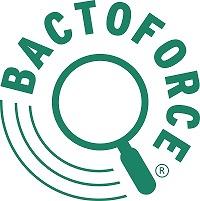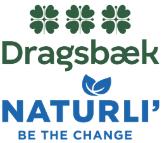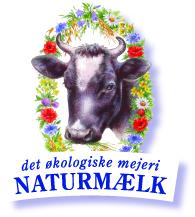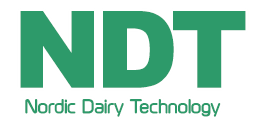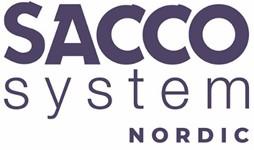 Modelfoto: shutterstock.com
Modelfoto: shutterstock.com
Fermentation of milk and vegetables has been applied for hundreds of years and its applications have been and still is being developed to the extent that is now considered one of the solutions to feed the worlds growing population, in other words it has an enormous potential.
This seminar will focus on this potential in addition to the classic fermentation processes at the dairies.
A wide range of fermented dairy products and dairy alternatives make allowance for the use of different cultures, combination of various culture types and enzymatic treatment. Thereby, a variety of flavor profiles, textures, and gel structures of the fermented dairy products are in play. Furthermore, ultra-rapid development of new cultures by aid AI will be explained.
The program of the seminar will also include presentations on “precision fermentation” to produce” cow-free” protein – for example, production of HMO (human milk oligosaccharides), as well as a presentation of the basics of nutrition related to fermentation. Phages continue to pose a significant challenge at many cheese dairies, so the latest knowledge about bacteriophages and phage resistance will be presented.
Sign up HERE

Welcome to the fascinating world of fermentation
Have you ever wondered how a simple glass of milk transforms into yoghurt or how those plant-based alternatives achieve their creamy texture?
The answer lies in the captivating world of fermentation, a process practiced for centuries that reveals a universe of taste, health benefits, and environmental responsibility.
This presentation presents the fascinating science behind fermenting cow's milk, plant bases, and even beer. We'll explore how this age-old technique not only creates the unique flavors and textures we crave but also extends shelf life naturally, reducing food waste. As the global population increases, the demand for sustainable and healthy food options grows and fermentation offers a compelling solution, with the potential to enhance nutritional values.
Join us as we embark on an exploration of fermented favorites like yogurt, cheese, plant-based alternatives, and of course, the ever-popular beer. Let's unlock the prospectives of this ancient practice and discover how fermentation continues to shape the future of our food!
Bacteriophages and bacteriophage resistance, new findings
Bacteriophages (phages) that attack starter cultures have been known for nearly 90 years (Whitehead, 1935). But already 50 years earlier, Storch reported that pure single strain starter cultures, that he had isolated and cultivated, became “weak after 1-2 days at the dairy” (Storch, 1885), probably because of phage problems.
Phage problems are still today recognized as the most important problem in the production of fermented dairy products, including cheese.
We will tell you news about the phages we meet in the dairy industry with examples of how the use of new types of cultures can affect which new types of phages we meet.
Phage resistance are the mechanisms that a starter strain uses to suppress phage attacks. There are many different types. Some have already been well characterized in starter strains. But several new mechanisms found in other bacteria now appear also to be present in certain starter strains. We will describe some of these new mechanisms, identified in connection with whole genome sequencing of starter culture isolates.

Development of new fresh cultures with help of AI collaboration platform
Choosing the right yogurt culture for a specific application has never been an easy task. The new AI-driven Culture Co-Creation Platform is helping dairy manufacturers to create all-in--one culture that elevate taste, texture, and health benefits in fermented dairy products. This new technology allows to create the cultures allowing improved sensory, technical, and shelf-life properties of yogurts all at once, saving valuable time and resources. The product is developed with the use of Co-Creation Platform integrating Machine Learning and AI, while working closely together with dairy producers and understanding their specific needs.
By reducing trial complexity during the culture selection process, this novel machine-learning-led platform significantly improves the accuracy and speed of new product development, thus dramatically enhancing efficiencies, as well as driving down waste at both the manufacturer and end-consumer level.

Yoghurt 3.0: harvesting the metabolic potential of starter cultures beyond the acidification
Scientific advances in understanding genetic and metabolic potential of lactic acid bacteria in the past decades have enabled development of starter cultures with functionalities beyond acidification speed and consistency. While these are clearly still of paramount importance, this talk will focus on novel approaches to providing superior texture, calorie reduction and extended shelf life in traditional and novel fermented milk products with examples of commercialized solutions.

Precision fermentation of milk proteins - The What, the Why, and the How!
When it comes to disrupting the ingredient market, no other technology rivals the potential of precision fermentation. While biomass fermentation, and cell cultivation will likely also impact the future of food, it is precision fermentation that promises to revolutionize the ingredient market. With precision fermentation, ingredients are no longer extracted from complex sources, such as milk, but rather produced individually at high yields, in sustainable systems.
This presentation will cover:
- What precision fermentation is and how it is distinguished from other types of fermentation and cell cultivation,
- Why precision fermentation of dairy proteins holds great potential
- How the technology is leveraged to provide ingredients for the future,
- What challenges are still to be overcome
The presentation will provide insight into the technology of precision fermentation, as well as the other unit operations needed for a process line. Much of the equipment will be familiar to what is found in regular dairy plants, and likewise the products seem similar. Remember, the technology is new, but the product should stay the same.

HMOs as bioactive novel food ingredients produced with precision fermentation
When breast feeding is not possible, infant formula is the alternative to breast milk. Standard infant formula lacks several of the bioactives that are present in human milk, like the human milk oligosaccharides (HMOs). In fact, HMOs are the third largest component in human milk, , and account for the biggest compositional difference between breast milk and formula. To bridge this gap, HMOs are currently manufactured by precision fermentation with Genetically Modified Microorganisms (GMMs), which make them affordable for formula applications. Precision fermented HMOs ingredients require regulatory authorization prior to commercialization in multiple markets globally. In the European Union HMOs are considered Novel Foods. To secure successful authorization of an HMO, the European Food Safety Authority must publish a positive scientific opinion on the safety of the HMO incl. the safety of the GMM. Based on the positive scientific opinion the European commission votes to include the HMO in the Novel Foods Union list. Currently, seven HMOs are listed on the Novel Foods Union list and authorized for commercialization.

New cultures for plant based and dairy fresh-fermented – an opportunity for texture, taste and process optimization
Fermentation of dairy products is a process with a long tradition. Lactic acid bacteria like Streptococcus thermophilus, Lactobacillus ssp., Lactococcus ssp. and many others are used since centuries to produce fresh-fermented products from dairy. However, a new generation of cultures is needed, for a better control of the final products properties and a leaner production. Especially the texture and taste of the yoghurts can be significantly influenced by the culture choice, thereby allowing for a better control of the yoghurts thickness and mouthfeel, but also sweetness and acidity. Additionally, novelle cultures offer a better control of the post-acidification of the yoghurt during shelf-life.
Besides the well-known application of cultures in dairy products, cultures gained an increased interest for plant-based dairy alternatives in recent years. While plant-based raw materials are diverse and differ a lot from dairy, another generation of cultures, adapted to these raw materials was needed. Based on the raw material/culture combination, like for dairy, the final products can be tailored regarding there texture. Furthermore, the taste of fresh-fermented plant-based product can be significantly influenced by the culture, resulting in less plant-based off notes, more dairy-like flavors, and an overall cleaner taste.

Nutritional aspects of fermented dairy products
Historically, mankind has fermented foods because fermentation gave a longer shelf life and a more attractive taste/consistency. But fermented foods can also help to influence and hopefully increase the health of the people who eat them. Basically, fermented foods can influence/promote health in two different ways. Firstly, ingredients in the food itself can be modified during fermentation, to increase, for example, bioavailability of ingredients or the vitamin content. Additionally, the microorganisms from fermented products can also contribute to increased health. For example, they can produce substances in the gut, or contribute to modifying the gut microbiome (the distribution between different types of microorganisms).
This presentation will discuss typical fermented foods where the raw material can be of animal origin (meat or milk) or plant origin (grains, legumes, vegetables, and fruit).
We will focus on which microorganisms are harmless, and when to be more careful. Based on these considerations, we can try to peer into the crystal ball and predict which trends will (possibly) appear within fermented foods in the future.
We can also try to discuss which beneficial effects that can be scientifically proven, and what this means for possible health claims.




